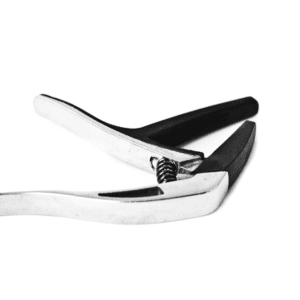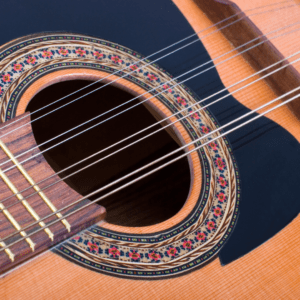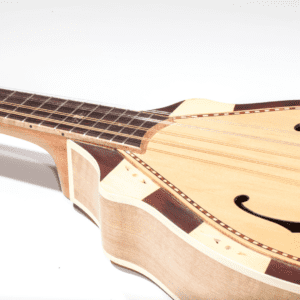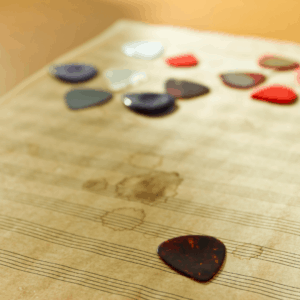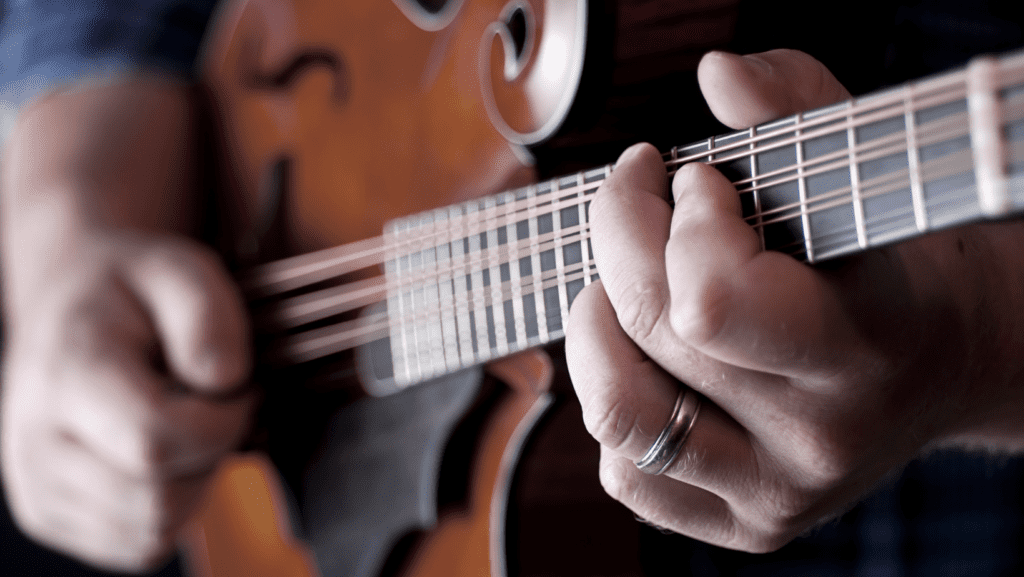
Have you always wanted to learn to play the mandolin? Do you love listening to the characteristic sound of the mandolin in music and want to start playing? This article will help answer questions you may have before getting started, and ultimately let you know how hard it is to learn.
Beginning concepts of mandolin are relatively simple as long as you take your time early on to develop proper technique. Like other instruments, there might be a steep learning curve when you first start, but determination will pay off when you begin to see large advances in your ability.
You may only want an introduction to the basics to satisfy your goals, but taking additional steps forward can add excitement to your musical journey! Luckily, there is an increasing amount of resources available now to help you learn how to play, making it easier to progress with your playing.
The main methods to learn are trying to teach yourself, watching instructional videos, joining group classes, meeting with a teacher online, or taking private lessons in person. Keep reading to find out which method might be right for you!
How long does it take to learn mandolin?
If you practice regularly and follow a structured routine, especially if you work with a teacher, you can pick up playing fundamentals in the first one to three months of playing. As you practice more, you will obviously be able to learn harder material, but it will take time and patience.
The process can be much faster if you already play a different instrument, especially a fretted string instrument. Many people play guitar and later decide to learn to play mandolin. Guitar players will notice many similarities between the two instruments, as they both have strings, frets on the neck, and are played in a very similar manner. This also overlaps with banjo, ukulele, bass guitar, and other instruments.
Below is a video interview with legendary mandolinist Ricky Scaggs discussing the early stages of playing the mandolin, but also looking at the instrument from the perspective of someone who already plays guitar.
Additionally, if you already know how to play violin, you will also have a much easier time playing mandolin since the two instruments use the same string tuning. The mandolin however uses “courses” or doubled strings. You can read more about those topics here.
Professional Mandolinists
Here are two videos of successful professional mandolinists playing at a high level to show you what is possible after years of dedication. The first is Avi Avital playing Antonio Vivaldi’s Mandolin Concerto in C Major. The second is Chris Thile plays J.S. Bach’s Sonata No. 1 in G Minor, BWV 1001. Both are world class soloists.
Avi Avital plays Antonio Vivaldi’s Mandolin Concerto in C Major
Chris Thile plays J.S. Bach’s Sonata No. 1 in G Minor, BWV 1001
What is easier to learn, mandolin or guitar?
When you first start off, many people think guitar is easier to learn than mandolin, since mandolin frets are so much smaller and playing the doubled strings can take some getting used to.
At first glance, it may look like the mandolin does not have as many strings as guitar, but actually guitars typically have six strings where mandolins technically have eight, although they are doubled in “courses” as mentioned above. Using one finger to press down two strings at one time feels unusual at first, but the strings are also thinner than guitar strings.
The lower strings on a guitar, especially steel string guitars, can be difficult to press down, especially for a beginner and also takes some getting used to. Playing a nylon string classical acoustic acoustic can reduce the discomfort of pressing the strings down, however classical guitars also generally have wider fres, making them more difficult to play if you have smaller fingers.
You can hear a nylon string classical acoustic guitar playing along with a mandolin in the video below. The video shows Marissa Carroll performing on mandolin with Joel Woods on classical guitar. Their performance of Paganini’s Sonata Conertata took place at the Ian Hanger Recital Hall at the Queensland Conservatorium of Music, Brisbane, Australia in May 2011.
Which is easier to learn, mandolin or ukulele?
Ukulele is generally easier to learn than mandolin due to using nylon strings similar to classical guitar, but ukulele is also generally easier than guitar since the frets are not as wide.
There are some exceptions of course, as professionals who play ukulele are able to play very technical advanced repertoire, but there are typically more challenges associated with mandolin, especially when you are starting out.
Which is easier to learn, mandolin or banjo?
Banjo is considered to be easier at the beginning stages than mandolin, once again mostly because the mandolin uses courses or double strings which can be difficult on your fingers. Banjo strings are usually easier to press down and are not doubled like mandolin.
Just like with other instruments, there are more advanced banjo techniques that will take time and patience, but generally you will encounter more difficulties early on with mandolin compared to banjo. This is somewhat subjective however and you may gravitate toward one over the other depending on your background.
How do you start learning to play mandolin?
Many mandolinists post instructional videos on Youtube to help you learn. Other websites host instructional classes, livestream seminars, among other methods of sharing information. You can also meet with a private instructor in person or online to help you along your journey.
Having the guidance of a teacher has a significant impact on your learning. A mandolin teacher will be able to explain what to do next each step of the way, and having immediate feedback of direct instruction will help ensure you are doing everything correctly.
If any problems arise, you will not get as frustrated since the teacher will be there to help make adjustments. Then, when you go to practice on your own, you will have a schema in your mind already from what you already learned with the teacher.
Mandolessons is a helpful Youtube channel posting regular updates to help you learn mandolin. Below is one of the videos teaching beginner technique.
TakeLessons.com is an excellent resource for finding a private teacher on a wide variety of instruments, including the mandolin. TakeLessons Live is an emerging supplemental resource where you can work with a teacher virtually in a variety of classes with a small group of other students; while TakeLessons Live does not currently offer mandolin, new subjects come out often, so it is worth keeping a lookout in case mandolin comes to TakeLessons Live.

What different kinds of mandolins are there?
The most popular types of mandolins are soprano mandolins. Other instruments you may come across in the same family include piccolo or sopranino, alto, tenor, mandocello, and mandobass.
Each different kind of mandolin is a different size, and with the change in size comes a change to the pitch. Smaller instruments are capable of playing in a higher range and larger instruments are capable of playing in a lower range. Cohen and Rossing (2010) outline valuable information on the instruments in the mandolin family. The following is a list of mandolin types from highest sounding to lowest sounding instruments.
Piccolo mandolins are the highest sounding mandolin and also the smallest. Smaller instruments are typically lighter and are easier to hold, but will have smaller frets making them more difficult to play for many players. They are tuned a perfect fourth higher than soprano mandolins. The open strings are C-G-D-E, creating open fifths between each string.
Soprano mandolins are the next highest sound instrument and the most commonly used in the family. Most people will picture a soprano mandolin in their head when they think of mandolin. They play in the same general pitch range as a violin, and appear in many genres of music. Soprano mandolins are traditionally tuned G-D-A-E.
Alto mandolins are sometimes called mandola. The relationship is similar to how a violin compares to a viola. They are slightly larger and therefore play in a lower range. The tuning is one fifth lower than soprano mandolin with the lowest string starting on C instead of G. The tuning for alto mandolins is C-G-D-A, keeping the open fifths between strings.
Tenor mandolins are tuned the same as a soprano mandolin, but every string is down one octave, allowing you to play in a lower range. For this reason, they are also called octave mandolins. These instruments are larger and therefore have wider frets making them more difficult to play if you are younger or have very small hands.
The mandocello is more uncommon, but they are unique instruments with a great sound. These instruments play in the baritone or bass range and are tuned a fifth lower than tenor mandolins. The open strings are C-G-D-E. This is the same tuning as a cello you would see in an orchestra, but the mandocello is played like a traditional mandolin where a cello sits on the floor and uses a bow to produce the sound.
The mandobass is also more uncommon, but exists to fill out the lowest range while staying in the mandolin family. Unlike the other instruments in the mandolin family, the mandobass does not use courses, or the doubled strings, since they are already so thick. The most common tuning used is also different and uses fourths rather than fifths. The open strings are E-A-D-G matching an upright bass. Some are tuned G-D-A-E but two octaves lower than the mandolin.
What is the difference between Neapolitan and Archtop mandolins?
If you have been looking up mandolins, you may have come across the terms Neapolitan and Archtop. These are two different types of mandolins typically used in different styles or genres. Neapolitan are bowl shaped on the back, where Archtop mandolins are mostly flat with a slight curve.
Neapolitan mandolins with the bowl shaped back are used more in Classical and Renaissance settings. They have a longer history and are not used as often in contemporary genres.
Archtop mandolins are flatter than Neapolitan mandolins, with only a slight curve on the back. They were invented by Orville Gibson in 1896, along with the first archtop Gibson guitars in Kalamazoo, Michigan (Dobney, 2016). They are very popular today and more common in country, bluegrass, and many other genres.
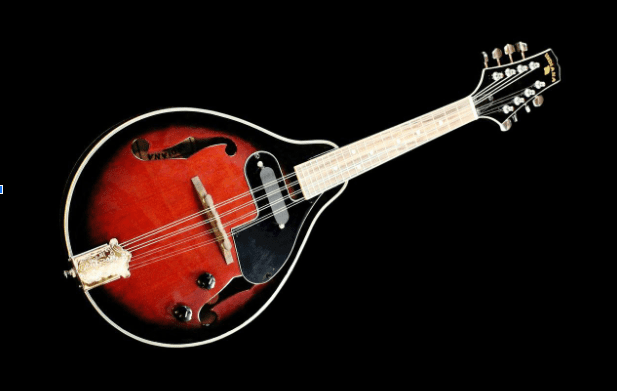
What is a Good Beginner Mandolin?
If you want to learn mandolin but have not purchased one yet, you have a wide range of options at various price points. Here are three options to help you narrow down your search.
The Vangoa Mandolin is the best selling mandolin on Amazon, and includes additional items to get you started. You get a mandolin, an instrument case, picks, a tuner, and extra strings. If you are a complete beginner and hobbyist looking to try out the mandolin this can be a great option for you.
Keep in mind though that cheaper instruments cost less for a reason, and the type of parts they use impact the quality of the instrument. For instance, the Vangoa Mandolin is made of basswood, which is softer than other wood used for instruments at higher price points and will therefore not be as durable or sound as full. You may want to keep some extra money in your budget to have a technician set up your instrument before playing depending on the condition of the instrument.
Even so, many people have found success starting off with the Vangoa Mandolin which can be purchased here.
Kentucky KM-150 Standard A-model Mandolin is a reliable instrument recommended by many teachers and professionals as a quality instrument to start learning on. It will cost more than the Vangoa, but if you continue playing, you will have more success going forward and will not need to worry as much about low instrument quality or reliability issues.
The Kentucky KM-150 Mandolin has a solid spruce top, maple back and sides, maple neck, and beautiful high gloss sunburst finish. The instrument sounds great, plays well, and has a great reputation. You can check out the Kentucky KM-150 here.
The Eastman MD305 Mandolin is a third price point and another brand alternative to explore. Compared to other brands, Eastman is newer on the market but has become a reliable instrument provider in many areas, including the mandolin. While Kentucky does have similar mandolins at this price point, you may enjoy looking for something a little bit more unique. Eastman strives to offer high quality musical instruments at competitive prices, while maintaining reliability. You can check out the Eastman MD305 here.
Where can I get mandolin music?
Having your own hard copy of music to work on helps with the learning process. Hard copies help you reduce the amount of time you spend looking at a screen, and you can take the music anywhere without worrying about the internet or getting a good signal.
One popular book for beginning mandolin players is Bluegrass Mandolin for the Complete Ignoramus!. The set is available on Amazon and walks you step by step through learning a simple melody to improvising on your own over a chord progression. After working through the book, you will be more successful playing music with others in a group setting.
The Hal Leonard Mandolin Method: Only for Beginners Music and Tablature is another excellent method book to help you get started with learning to play. Hal Leonard makes a variety of instrument method books, each page going into detail with the next skill you should learn. Starting with basic technique, and working progressively through more advanced music, Hal Leonard Mandolin Method helps guide you through learning mandolin.
Summary
The mandolin is a great instrument with many possibilities on where you can take it musically! We hope this article helped answer your questions about the mandolin, and helped learn even more about this great instrument. Good luck with your next instrument and enjoy your musical journey!
References
Cohen, D.J., Rossing, T.D. (2010). Mandolin Family Instruments. In: Rossing, T. (eds) The Science of String Instruments. Springer, New York, NY. https://doi.org/10.1007/978-1-4419-7110-4_6
Dobney, J. K. (September 2016). “Archtop Guitars and Mandolins.” In Heilbrunn Timeline of Art History. New York: The Metropolitan Museum of Art, 2000–. http://www.metmuseum.org/toah/hd/argu/hd_argu.htm


